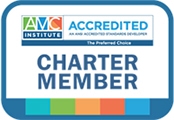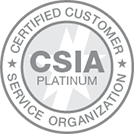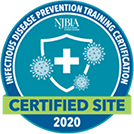In the world of non-profit meeting planning, many of us are tasked with planning several meetings at a time. It’s part of what we love about our jobs; no two days are the same and there’s never a dull moment! However, with so much on our plates at any given time, it may sometimes be tempting to move the smaller meetings to the bottom of the to-do list, not giving them the attention they deserve. However, by getting off to the right start, you can more easily plan a great small meeting!

The first step in planning successful small meetings, such as board meetings and committee meetings, begins with a thorough and thoughtful site selection process. Here are a few ideas to keep in mind when beginning the site search for your small meetings:
- Not Your Average RFP: We all have the basic meeting specifications in our RFP’s. But to take your meeting to the next level, don’t just list room block info, preferred dates, etc. – customize it! The more detailed information you can provide to your prospective bidders, the better the quality proposals you will get back. Why spend your time sifting through stacks of proposals that don’t meet your needs? Our hotels partners will be grateful as well, as it helps them better target the properties in their portfolios that are best suited to bid.
- Know Your Audience: Are they Board Members and/or other stakeholders in your organization? Are they first-time volunteers that may be nervous about participating or traveling? What type of “feel” do they prefer in a location? Some groups may like to be near the water, while others prefer the excitement of a downtown area. Do they like the more intimate feel of a smaller boutique hotel, or the energy of a larger meeting hotel?
No worries if you don’t know the answers to these questions yourself yet, talk to your team members. Your colleagues can be valuable resources and can share insight based on their own experiences working with these individuals.
- It’s All About That Space: Just because a hotel sends you a proposal, don’t assume the space they are proposing is a good fit for your specs:
- Take the time not just to look at the capacity chart, but also the floor plans as well. Square footage can be deceiving if the actual shape of the room won’t accommodate the set you need.
- Avoid surprises by asking as many questions as needed, confirm if there are columns or pillars in the room, how attendee would get from the sleeping rooms to the meeting space, etc.
- Ask for diagrams (drawn to scale!) if you have any doubt your set will comfortably fit in the proposed space.
- Ask for photos. Many times I have been told my set will fit nicely in a proposed meeting room, but when seeing the room set u-shape in a photo, I can easily identify potential problems, such as the chairs at the u-shape being too close to the wall, etc.
- Many hotels now offer 360 degree virtual tours on their websites that are also a great tool, especially if you don’t have it in your budget to do a site visit.
- What does the space offer that will make it special or different? Remember your volunteers will be sitting in that room ALL day, for multiple days. When possible, find space that has a lot of windows with great views and natural light. Space with an adjoining or nearby terrace/balcony is always a bonus to get some fresh air during a break.
- If you have noticed that the needs for your group tend to change over time, consider space that allows some room to grow.
- If your meeting requires multiple meeting rooms, are the proposed rooms located near one another? Small meetings usually have limited staff on-site, so the closer together the rooms, the more effectively they can be managed.
- The B Word: Of course we would all love to book luxury hotels for our meetings, but the reality is that our budgets often play an integral role in the site selection process. However, a little flexibility and strong negotiating skills can go a long way.
- Take the time to examine the overall value of the proposals. When you compare not just the room rate, but meeting room rental fees, service charges, resort fees, menu pricing, offered concessions, AV costs and so on, you will really get a feel for which option is the best overall value. You may even be surprised!
- Take a look at what you spent on food and beverage at a past similar meeting. If the menu prices are similar, and you know you will actually spend much more than the proposed food and beverage minimum, offer to increase the minimum to a number where you would still feel comfortable that you would spend that much, and use it as leverage to get a lower the room rate, or waive meeting room rental fees.
- Take time to see how food and beverages prices for a few items you normally order stack up against the pricing at other locations under consideration to get a quick feel for overall pricing. This is an easy way to help identify any pricing red flags. Also, take into consideration if any hotels may be offering a discount off menu pricing that other proposals don’t. Ten percent may not sound like much, but it can equate to significant savings.
- Don’t be afraid keep pushing for those concessions that are really going to be a cost savings. Keep an eye out for pesky fees for buffet meals under “X” amount of people, or ask for a discount for Wi-Fi in the meeting space if they won’t agree to provide it complimentary, just to name a few. These smaller fees can really add up for multi-day small meetings!
- Out and About: What is the immediate area like around the property you are considering? I like to do a quick internet search for the satellite view of a hotel to see what’s nearby. Does it have ample options nearby for those off-site dinner outings you know you will need to book? If there are a lot of options within walking distance, it could save in transportation expenses while also allowing attendees to experience the destination.
- Putting It All Together: I like to present my recommendations to our team leaders via a comparison grid, featuring only the properties that I feel should be considered. However, there is often additional information that I want to highlight to our decision makers that may not fit into a specific topic area. So, I also include any important notes and highlight any pros and cons that I think are important factors in the decision making process. I also find it helpful to provide PDF’s of hotel floor plans where I indicate which rooms we would be using for our meetings, to serve as a nice visual of the overall layout.
More often than not, our small meeting attendees are our stakeholders (Board members and other volunteer leaders) thus presenting an excellent opportunity to showcase your attention to detail, creativity, and thoughtfulness in the ways you can customize their personal experiences. Why not get off to a great start with finding the perfect host hotel as the foundation of their experience?




